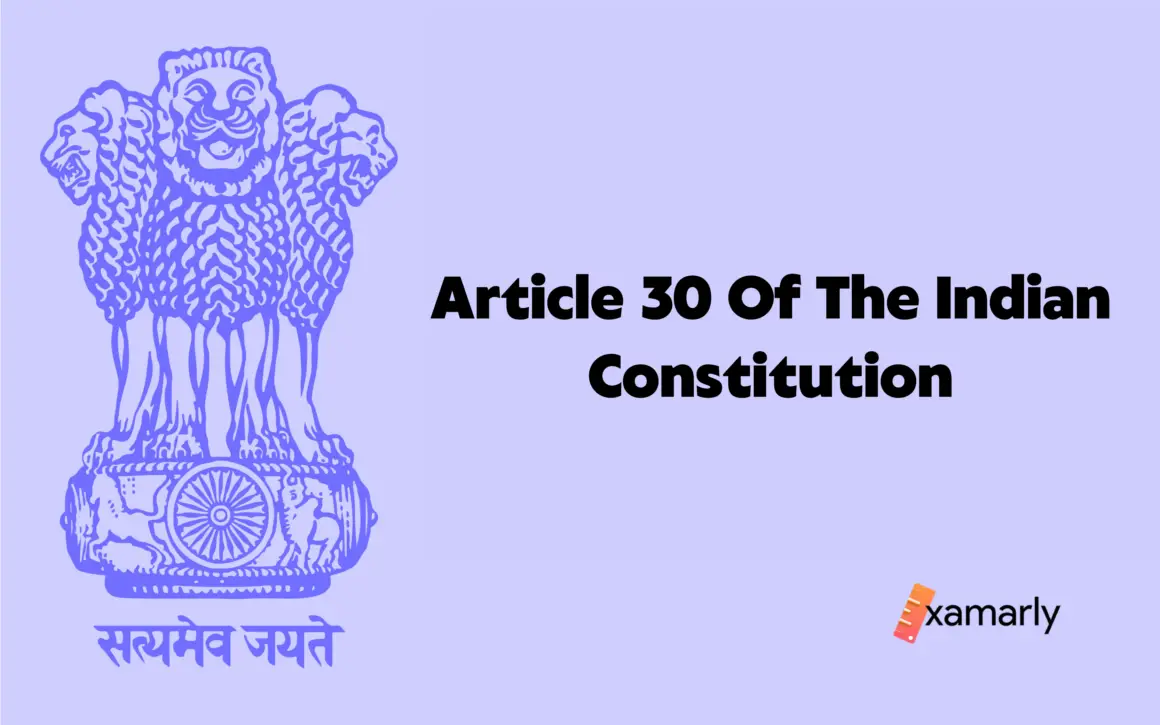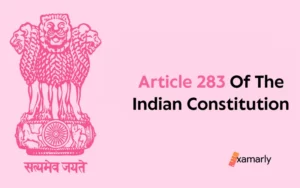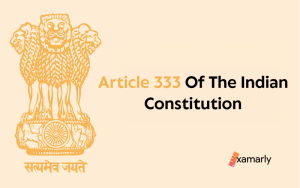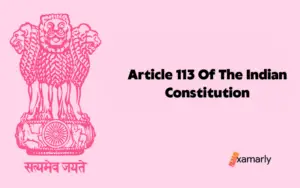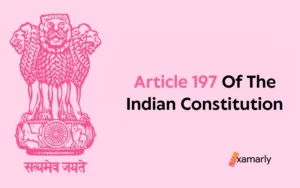The Indian Constitution provides certain rights to the citizens of the nation and ensures that these rights are protected. These rights are commonly known by the name of fundamental rights. In total, there are six fundamental rights guaranteed by the Indian Constitution. Cultural and educational rights are one of the six fundamental rights provided for Indian citizens.
Article 30 of the Indian Constitution encapsulates the ideals of cultural and educational fundamental rights to protect the rights of minority groups. Read on to grasp the essence of Article 30.
- Article 30 Of The Indian Constitution: Right Of Minorities To Establish And Administer Educational Institutions
- Subclauses Under Article 30 Of The Indian Constitution
- Arguments Against and For Article 30 Of The Indian Constitution
- Who Are Minorities According To The Indian Constitution?
- Types Of Minorities In The Indian Constitution
- Verdict Of Article 30 By The Supreme Court
- Summing Up
- FAQs
Article 30 Of The Indian Constitution: Right Of Minorities To Establish And Administer Educational Institutions
- The text of Article 30 as mentioned in the Indian Constitution states the following:
“30. Right of minorities to establish and administer educational institutions.
(1). All minorities, whether based on religion or language, shall have the right to establish and administer educational institutions of their choice.
(1A). In making any law providing for the compulsory acquisition of any property of an educational institution established and administered by a minority, referred to in clause ( 1 ), the State shall ensure that the amount fixed by or determined under such law for the acquisition of such property is such as would not restrict or abrogate the right guaranteed under that clause
(2). The state shall not, in granting aid to educational institutions, discriminate against any educational institution on the ground that it is under the management of a minority, whether based on religion or language.”
- The other name for Article 30 of the Indian Constitution is the ‘Charter of Education Rights’, which renders rights to minorities and allows them to establish and operate their educational institutions in an independent manner.
- It advocates equality for minorities. Education for minorities also falls under the ambit of Article 30.
- It was adopted on December 8, 1948.
Related – Right of minorities to establish and administer educational institutions
Subclauses Under Article 30 Of The Indian Constitution
Article 30 of the Indian Constitution has two subclauses, namely- Articles 30(1) and 30(2). Let us look at these subclauses individually.
Article 30(1)
- This article speaks in favor of all religious and linguistic minorities of the country. It allows them to lay the foundation of educational institutes of their liking and also its effective management.
- Article 30(1A) revolves around the cost involved in the acquisition of property. This property is with regard to any educational institution founded by minority groups.
Article 30(2)
This article strictly prohibits discrimination on grounds of religion or language. It instructs the State to remain unbiased when allocating funds to educational institutions. The State shall not hold any prejudice against the administrative rights of a minority-run educational institute.
Arguments Against and For Article 30 Of The Indian Constitution
- The Constituent Assembly discussed the importance of providing primary education in one’s mother tongue. The debate around Article 30 was held on December 8, 1948. An amendment was proposed by one Assembly member. According to his opinion, the application of Article 30 must be limited to linguistic minorities. He claimed that minorities should not be recognized on the basis of their religion. This would go against the principles of a secular state.
- An Assembly member made a proposal to uphold the fundamental right of receiving primary education for linguistic minorities. He opined that such groups must be aided to receive primary education in their own language and script. He was concerned about the condition of minority languages. The situation did not look very promising even in areas where a sizable minority population resided.
- Both these suggestions were debated in the Constituent Assembly. Ultimately, both of them were turned down.
Who Are Minorities According To The Indian Constitution?
- The Indian Constitution does not explain ‘minority’. It does not define the term ‘minority’ anywhere. It gets its meaning from the statistical data derived by analyzing the percentile between the majority and minority communities residing in the country.
- This data is collected by dividing people based on difference of religion. This data classifies certain religious minorities. These include people who identify as Muslims, Christians, Buddhists, Jains, Sikhs, Parsis, and others.
- The Supreme Court clarified this classification of minorities and also the classification of minority educational institutions. It did so in the case of the T.M.A. Pai Foundation and Ors. v. State of Karnataka and Ors. (2002), where it referenced guidelines on Articles 29 and 30 of the Constitution.
- The Court made it clear that the State must decide a parameter to judge which groups qualify as linguistic and religious minorities. This must not be done on a national scale. As a result, both these minority populations and the educational minority institutions are required to abide by the laws and policies of their individual states as these laws, rules, and policies were created by the state under the direction of the centre. These laws are made in accordance with national sovereignty and morality. The issue of security and public order is also taken into consideration while formulating these laws.
Types Of Minorities In The Indian Constitution
Broadly speaking, there are two types of minority groups classified by the Constituent Assembly. One is based on religion (religious minorities) and the other is based on language (linguistic minorities).
Religious Minorities
- The primary factor used to determine whether a group qualifies as a religious minority is its size as more numerical strength would mean a majority and vice versa. For instance, Hindus, constitute the majority of the population in India, so the Hindu religion qualifies as a majority. It is crucial for the government to preserve and protect the country’s religious minorities. Given that the country is a multi-religious country.
- The National Commission of Minorities Act lists minority communities. These are six in number and are held in Section (2), clause (c) of the act. The Indian minorities on the basis of religion include Muslims, Christians, Buddhists, and Sikhs. Jains and Zoroastrians or Parsis are also included in the list of religious minorities.
Linguistic Minorities
- There are classes of people who do not speak the same languages as that of majority groups. These are the linguistic minorities whose mother language or mother tongue is different.
- The interests of these linguistic minority groups need to be safeguarded. The Constitution of India takes the initiative to do so.
Verdict Of Article 30 By The Supreme Court
- In the case Secretary of Malankara Syrian Catholic College v. T. Jose & ors. (2006), the Honorable Supreme Court expressed its view regarding Article 30 of the Indian Constitution.
- It stated that under Article 30 of the Constitution, the right granted to minorities is to ensure equality with the majority. In no way does the article grant them an advantageous position. Also, the general laws will apply to all educational institutions.
- The argument that Article 30A forbids the teaching of religious texts has also been brought forth. These include the Bhagvat Geeta, Vedas, Puranas, etc. The court dismissed the issue of Article 30A. The reason for doing so was that it was not a part of the Indian Constitution.
You Might Also Like – Article 31 Of The Indian Constitution
Summing Up
- Cultural and educational rights are one out of the six fundamental rights embedded in the Indian Constitution. The motive behind this right is the preservation of the culture of minority groups.
- India’s strength lies in the diverse cultures that are found here. Indian society is a mix of these cultures and each one is unique in its own way.
- The purpose behind granting constitutional provisions to minority groups by the Indian Constitution is that the diversity within the country remains intact. The Indian Constitution follows the principle of equality and provides equality of opportunity to establish and govern educational institutions for all minority groups.
- Furthermore, the Constitution provides all groups, even the marginalized groups to safeguard and maintain their distinct culture. It also allows them to spread their culture in order to promote diversity in the nation.
- Article 30 is an initiative toward providing education to minorities by giving them the authority to establish and govern minority institutes aimed at promoting education.
FAQs
Q. What is the significance of Article 30?
Article 30 is of great significance from the point of view of minorities in India. It provides them the authority to establish as well as manage their own minority institutions for the purpose of education.
Q. What is meant by cultural and educational rights?
It is one of the six fundamental rights guaranteed by the Indian Constitution. It is granted for the betterment of religious and linguistic minority groups of the country. The objective of this right is to help such groups protect their culture, language, or script to maintain the cultural diversity of India.
Q. Is Article 30 of the Indian Constitution an absolute right?
The right established by Article 30(1) is an absolute right. This is because it is a fundamental right and not subject to reasonable restrictions.


